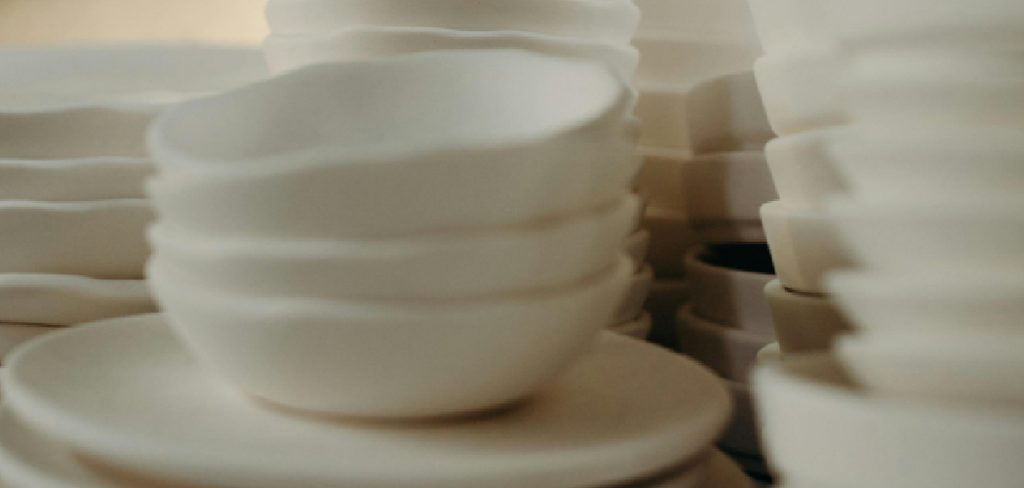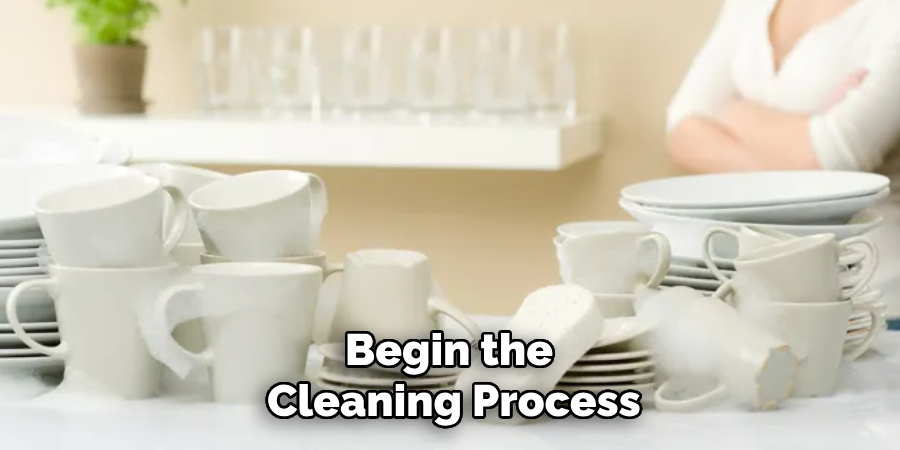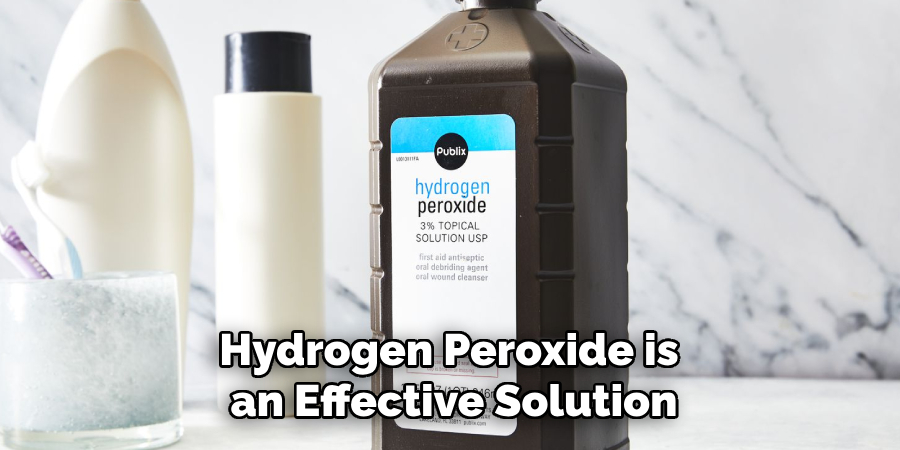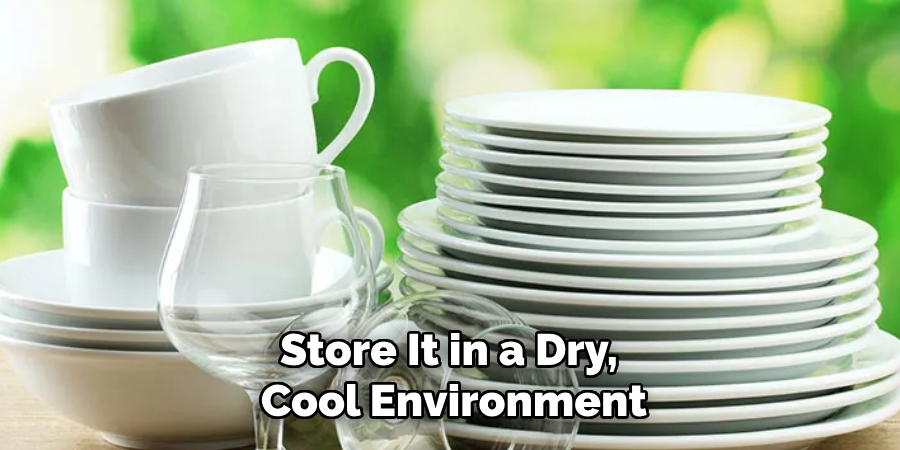Stoneware is a type of durable ceramic material widely appreciated for its versatility and aesthetic appeal, making it a popular choice for kitchenware and decorative items alike. Its dense, non-porous nature makes it resistant to chipping and cracking, providing longevity with proper care. However, stoneware isn’t immune to issues such as mold development, which can occur due to prolonged exposure to moisture or improper storage.

The appearance of mold on stoneware diminishes its visual appeal and can be a health concern if not addressed. This article aims to provide a comprehensive, step-by-step guide on how to clean mold stoneware effectively. With the right approach, it’s possible to restore the piece to its original condition while preserving its finish, ensuring that it remains a cherished part of your collection for years to come. Whether dealing with kitchen dishes or decorative art, this guide will equip you with the knowledge needed for proper maintenance.
Why Mold Forms on Stoneware
Understanding the Porous Nature of Stoneware
Although stoneware is often considered non-porous, its surface can contain micro-pores or tiny imperfections that may absorb moisture over time. This susceptibility makes stoneware prone to mold growth, especially if it is not dried properly after use. The absorbed moisture serves as an ideal environment for mold spores to thrive. Therefore, adhering to appropriate care routines, including thorough drying after washing, is crucial to maintaining your stoneware. Ensuring it remains dry, particularly in moisture-prone areas, you can significantly reduce the chances of mold developing.
Common Causes of Mold on Stoneware
Several factors can trigger mold development on stoneware. Improper drying after washing is one of the main contributors, as lingering moisture can quickly lead to mold. Additionally, storing stoneware in damp or humid areas without adequate ventilation can exacerbate the problem. Exposure to food residues, such as oils and sugars, also provides nutrients that encourage mold growth. To prevent these issues, it is advisable to thoroughly dry stoneware before storing it, avoid leaving it in humid environments, and ensure it is clean of any food residue after use. These simple practices can help keep your stoneware mold-free and in excellent condition.
Safety Precautions for Cleaning Mold
Health Risks of Mold
Mold exposure can lead to various health issues, making it essential to handle moldy stoneware with care. Mold spores can cause respiratory problems, exacerbate asthma symptoms, trigger skin irritation, and lead to allergic reactions. When dealing with moldy items, particularly food-safe stoneware, it is crucial to take necessary precautions to prevent these health risks.
Protective Measures

When cleaning mold from stoneware, wearing protective gear such as gloves and masks is important to minimize direct contact and inhalation of mold spores. Ensuring the cleaning area is well-ventilated is also vital to disperse airborne particles and reduce exposure. After cleaning, dispose of any used materials, like sponges or cloths, or wash them thoroughly to remove any mold residue. By following these protective measures, you can safely and effectively restore your stoneware without compromising your health.
Materials Needed for Cleaning
Essential Cleaning Supplies
To effectively clean mold from stoneware, you will need a few key cleaning supplies. Mild dish soap is essential for removing surface grime without damaging the stoneware. White vinegar and baking soda are natural cleaners that work well together to break down mold. Hydrogen peroxide is another powerful mold-fighting agent that can be used to disinfect the stoneware. Additionally, using soft brushes, sponges, and microfiber cloths is crucial to gently remove mold without scratching the delicate surface of your stoneware.
Optional Materials
For those interested in natural cleaning alternatives, lemon juice, due to its acidic properties, can be used as an effective mold-fighting agent. Distilled water is recommended for rinsing the stoneware, as it prevents mineral deposits from forming that might encourage future mold growth. A toothbrush can be particularly useful for deep cleaning and reaching into the hard-to-reach areas of intricate stoneware pieces, ensuring all mold is meticulously removed.
How to Clean Mold Stoneware: Step-by-Step Cleaning Process
Initial Rinse and Surface Cleaning

Begin the cleaning process by thoroughly rinsing the stoneware under warm water. This step helps to wash away any loose mold or residue that may be sitting on the surface. Take care to examine the piece and ensure that all loose materials are removed, as they can hinder the cleaning process if not addressed. Next, apply a small amount of mild dish soap to a soft sponge to prevent scratching the stoneware’s surface. Gently clean the entire stoneware surface with the soapy sponge, paying special attention to areas with visible mold to remove as much of it as possible. Once you’ve scrubbed the surface, rinse the stoneware again with warm water to remove the soap residue.
Using a Vinegar Solution for Mold Removal
Prepare a solution using equal parts white vinegar and water for a more effective mold removal process. The acidity of vinegar makes it a natural disinfectant, capable of breaking down mold spores. Immerse a clean cloth or sponge in the vinegar solution and apply it comprehensively to the surface of the stoneware. Allow the solution to sit for 10-15 minutes, giving it ample time to penetrate and dissolve the mold spores. After the wait time, gently scrub the stoneware again using the same vinegar solution to lift the mold from the surface. This step helps remove mold and disinfect the stoneware, ensuring a more thorough cleaning.
Baking Soda Scrub for Stubborn Mold
If some mold remains after using the vinegar solution, baking soda can be used as a gentle abrasive to remove persistent stains. Create a paste by mixing baking soda with a small amount of water. This paste should have a thick consistency to effectively scrub the affected areas. Apply the baking soda paste onto the stoneware, concentrating on the stubborn mold spots that are more pronounced. Using a soft-bristle brush, gently scrub the paste into these areas, particularly in porous sections where mold may have settled deeper. Once satisfied with the cleaning, rinse the stoneware thoroughly with warm water to remove baking soda residues. Finally, dry the stoneware completely to prevent further mold growth.
Deodorizing and Deep Cleaning
Using Hydrogen Peroxide for Stubborn Mold

Hydrogen peroxide is an effective solution for tackling deep-set mold stains that may persist despite initial cleaning efforts. Apply a generous amount of hydrogen peroxide directly to the affected areas of the stoneware, allowing it to penetrate the mold by letting it sit for 10-15 minutes. This waiting period enables the hydrogen peroxide to work through the mold spores, loosening their grip on the stoneware. Once the hydrogen peroxide has had sufficient time to act, scrub the area thoroughly using a soft brush to dislodge the mold. Rinse the stoneware with warm water afterward to ensure all hydrogen peroxide residues and any dislodged mold are thoroughly washed away. This step both deep cleans and sanitizes the stoneware, leaving it mold-free.
Lemon and Sunlight Method for Natural Deodorizing
Lemon juice and sunlight are an excellent natural combination for deodorizing and bleaching mold-affected stoneware. The citric acid in lemon juice has natural bleaching properties that can help break down mold while also freshening the stoneware. To use this method, apply lemon juice liberally over the affected areas of the stoneware and then place the item in direct sunlight. The sun’s ultraviolet rays work alongside the lemon juice to naturally disinfect and deodorize the stoneware. After sufficient sunlight exposure, typically a few hours, clean the stoneware with a soft cloth to remove any odor and lemon juice residue, ensuring a fresh, clean finish.
Drying and Preventative Measures
Proper Drying Techniques
After cleaning, it is vital to thoroughly dry your stoneware to prevent mold from reappearing. Ensure all surfaces are wiped down with a clean, dry cloth, followed by air drying in a well-ventilated space. Direct sunlight is particularly effective, as it dries and uses UV rays to inhibit mold growth. Whenever possible, take advantage of clear weather to finish drying your stoneware outdoors.
Storage Tips to Prevent Mold

To keep your stoneware mold-free, store it in a dry, cool environment with minimal moisture levels. Avoid keeping stoneware in airtight containers, as this can trap moisture and foster mold growth. Instead, opt for open shelving or ventilated cabinets. Occasionally, air out your stoneware by placing it in an area with good air circulation, ensuring that any residual moisture evaporates effectively.
Conclusion
By following the outlined steps on how to clean mold stoneware, you ensure efficient mold removal and the preservation of your cherished items. Start with initial rinsing and surface cleaning, progressing through vinegar and baking soda treatments, and addressing stubborn mold with hydrogen peroxide or the natural lemon and sunlight method. A key aspect is thorough drying and proper storage to avoid future mold issues. Regular maintenance and a well-ventilated storage space are crucial for keeping your stoneware in optimal condition. Utilize these methods to effectively manage and maintain your stoneware collection.
You may also check it out to Clean Ceramic Plant Pots
Specialization:
- Master of wheel-throwing, hand-building, and advanced glazing techniques
- Focus on creating both functional pottery and decorative art pieces
Recognition:
- Celebrated by collectors and art enthusiasts for creating one-of-a-kind pieces that blend artistry with functionality
- Participates in local and national exhibitions, earning accolades for his innovative designs and craftsmanship
Passion:
- Deeply committed to exploring and pushing the boundaries of ceramic artistry
- Continuously experiments with new materials, firing techniques, and artistic concepts to evolve his craft
Personal Philosophy:
- Believes in the transformative power of art, aiming to evoke emotions and connections through his ceramic creations
- Advocates for sustainability in ceramics, using eco-friendly materials and practices whenever possible


